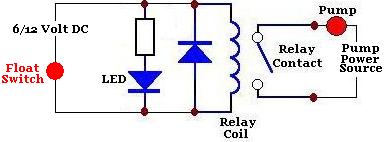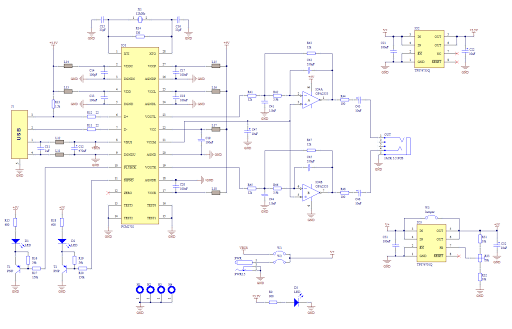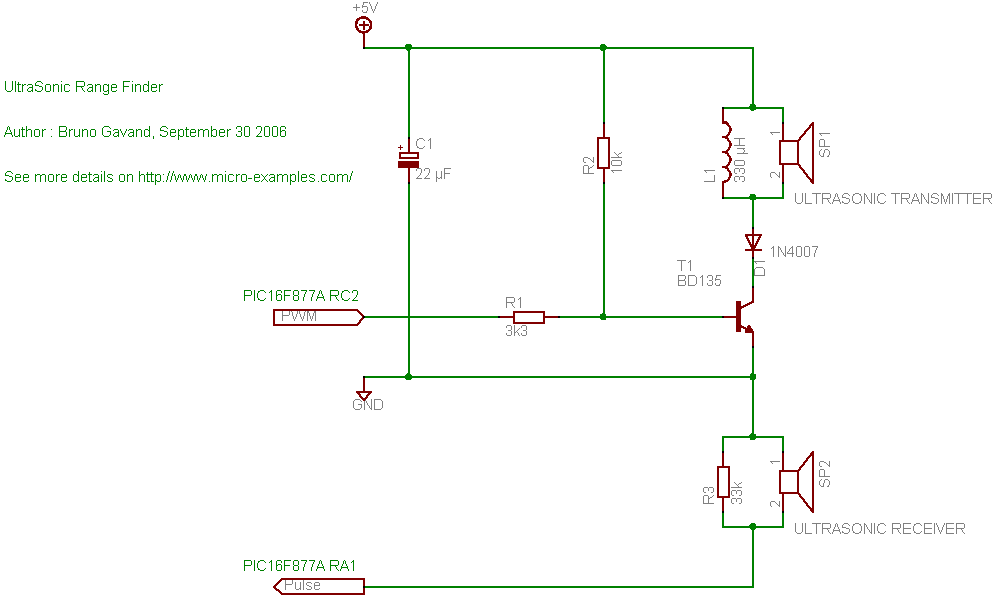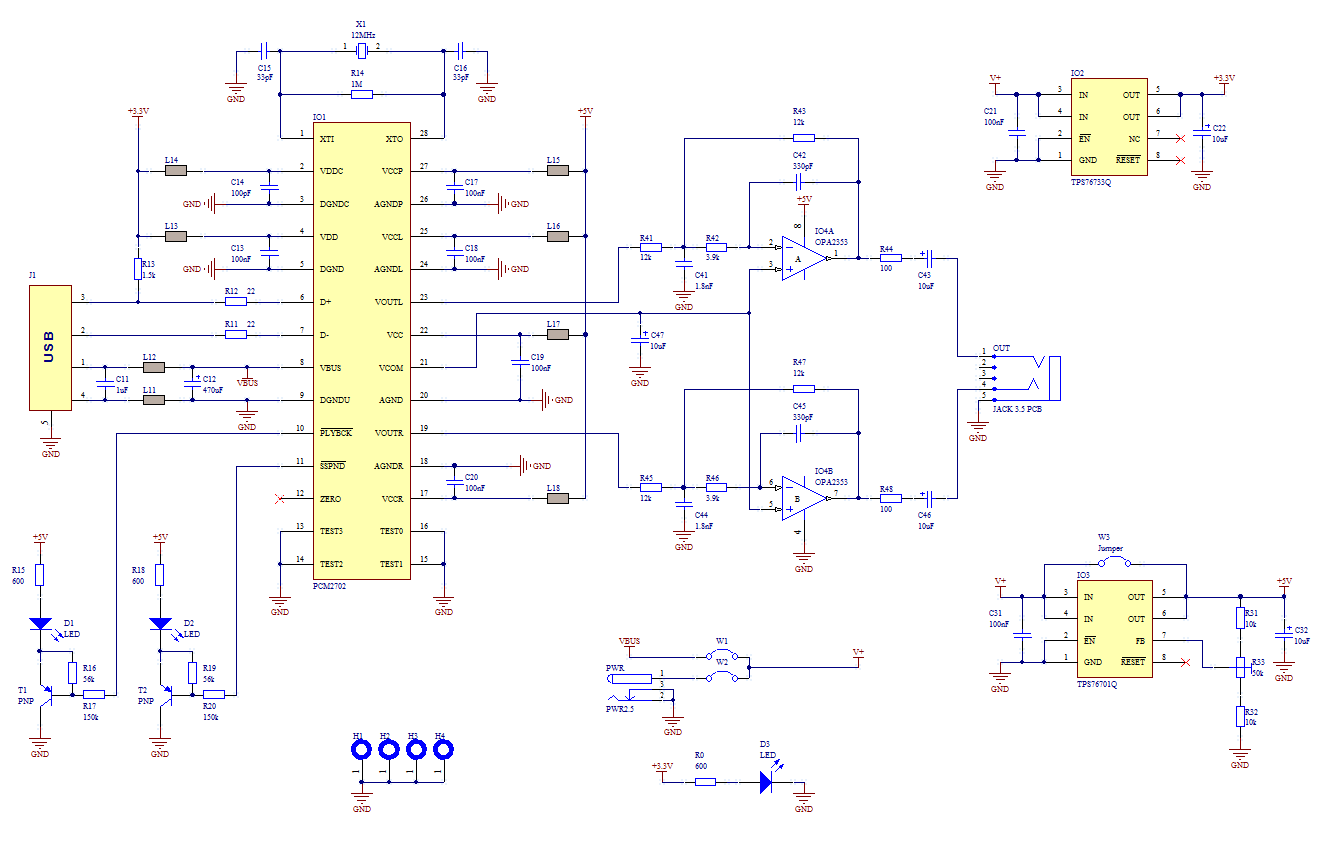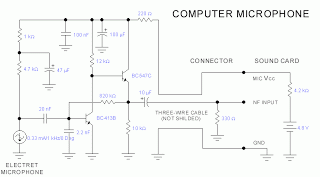
Sound Level Indicators
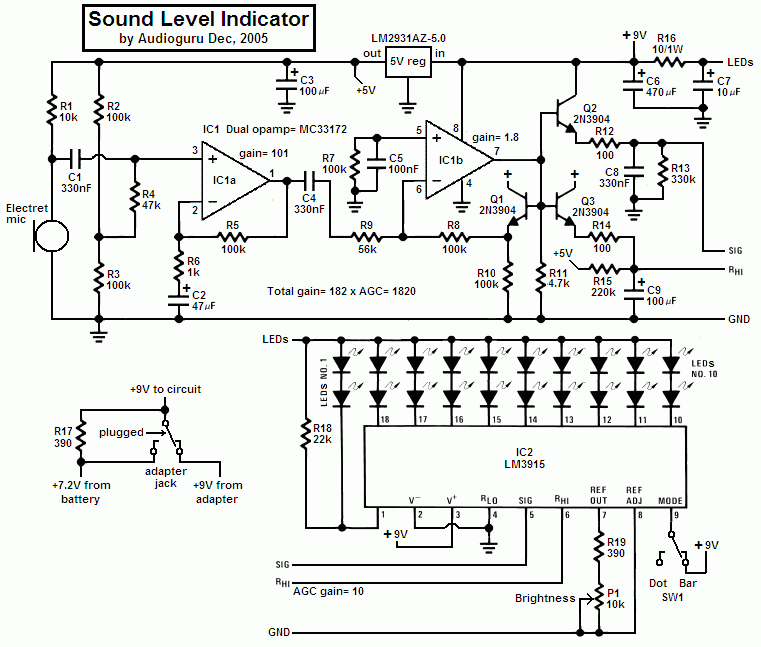
This project utilizes an LM3915 bar-graph integrated circuit (IC) to drive two sets of ten LEDs, providing a 30 dB range. The circuit features an additional 20 dB range enabled by an automatic gain control, allowing for high sensitivity to low sound levels while increasing the range for louder sounds. Each LED operates at 26 mA with maximum brightness settings. A switch is included to toggle between two modes of operation: a moving dot of light or a bar with varying length. The prototype is powered by a small 9V Ni-Cad rechargeable battery for portability, with the battery being trickle-charged when connected to a 9V AC-DC adapter. The second operational amplifier (op-amp) stage is a single-supply op-amp that functions effectively with its inputs and output at ground level, serving as a rectifier driver with a gain of 1. It is grounded biased, and since it is inverting, a negative input swing results in a positive output swing. The transistor Q1 is integrated into the negative feedback loop of the second op-amp, serving as a voltage reference for the other two transistors, which are expected to match each other. The transistor Q3 functions as the automatic gain control and also acts as a peak detector, featuring slower charge and discharge times. Q3 drives the resistor ladder of the comparators in the LM3915 to adjust sensitivity. Resistor R15, connected to +5V, forms a voltage divider with the total resistance of the ladder, approximately 25k, providing about +0.51V at low sound levels. In contrast, loud sounds cause Q3 to elevate the ladder’s voltage to 5.1V, reducing sensitivity. The LM3915 regulates current for the LEDs, eliminating the need for current-limiting resistors. In bar mode, with all LEDs illuminated, the LM3915 can become hot, so a 10-ohm, 1W resistor (R16) is used to dissipate heat. The stripboard layout is designed to fit within a Hammond 1591B plastic enclosure, with space allocated at the lower end for the rechargeable 9V battery. One bolt secures the circuit board, while a second, shortened bolt serves as a guide.
The circuit employs the LM3915, which is specifically designed for LED bar-graph or dot displays. It can drive multiple LEDs in a linear fashion, providing a visual representation of audio levels. The automatic gain control (AGC) circuit enhances the functionality by adjusting the sensitivity based on the input signal, allowing it to effectively handle a wide range of sound levels. The use of a rechargeable battery ensures that the device remains portable, making it suitable for various applications where mobility is essential.
The operational amplifier configuration is critical for signal conditioning, allowing the circuit to respond to audio signals accurately. The inverting nature of the op-amp ensures that the output signal is a direct representation of the input, facilitating precise control over the LED display. The inclusion of Q1 as a voltage reference stabilizes the operation of the transistors, ensuring consistent performance across varying conditions.
The design also considers thermal management, as the LM3915 can generate significant heat when all LEDs are active. The heat dissipation strategy using R16 ensures reliability and longevity of the components. The choice of a Hammond 1591B enclosure is practical, providing both protection and accessibility for the battery and circuit components. Overall, this project exemplifies an effective integration of analog components to create a responsive audio level indicator, showcasing both technical ingenuity and practical design considerations.This project uses an LM3915 bar-graph IC driving two sets of ten LEDs for a 30dB range. The circuit is unique because it has an additional range of 20dB provided by an automatic gain control to allow it to be very sensitive to low sound levels but it increases its range 20dB for loud sounds. The LEDs are operating at 26mA each with the brightness control at maximum, which is very bright. The circuit has a switch to select the modes of operation: a moving dot of light, or a bar with a changing length. My prototype has a little 9V Ni-Cad rechargeable battery in it to be portable and the battery is trickle-charged when the project is powered by a 9V AC-DC adapter.
3) The 2nd opamp stage is a single-supply opamp which works fine with its inputs and output at ground and is used as a rectifier driver with a gain of 1. 8. It is biased at ground. Since it is inverting, when its input swings negative, its output swings positive. a) Q1 is inside the negative feedback loop of the 2nd opamp as a voltage reference for the other two transistors.
Hopefully the transistors match each other. c) Q3 transistor is the automatic gain control. It is also a peak detector but has slower charge and discharge times. It drives the comparators ’ resistor ladder in the LM3915 to determine how sensitive it is. R15 from +5V is in a voltage divider with the ladder ’s total resistance of about 25k and provides the top of the ladder with about +0. 51V when there is a very low sound level detected. Loud sounds cause Q3 to drive the top of the ladder to 5. 1V for reduced sensitivity. 5) The LM3915 regulates the current for the LEDs so they don ’t need current-limiting resistors. In the bar mode with all LEDs lit then the LM3915 gets hot so the 10 ohm/1W resistor R16 shares the heat.
1) The stripboard layout was designed for a Hammond 1591B plastic box with space in the lower end for a rechargeable 9V battery. One bolt holds the circuit board and a second bolt was cut short as a guide. 🔗 External reference
The circuit employs the LM3915, which is specifically designed for LED bar-graph or dot displays. It can drive multiple LEDs in a linear fashion, providing a visual representation of audio levels. The automatic gain control (AGC) circuit enhances the functionality by adjusting the sensitivity based on the input signal, allowing it to effectively handle a wide range of sound levels. The use of a rechargeable battery ensures that the device remains portable, making it suitable for various applications where mobility is essential.
The operational amplifier configuration is critical for signal conditioning, allowing the circuit to respond to audio signals accurately. The inverting nature of the op-amp ensures that the output signal is a direct representation of the input, facilitating precise control over the LED display. The inclusion of Q1 as a voltage reference stabilizes the operation of the transistors, ensuring consistent performance across varying conditions.
The design also considers thermal management, as the LM3915 can generate significant heat when all LEDs are active. The heat dissipation strategy using R16 ensures reliability and longevity of the components. The choice of a Hammond 1591B enclosure is practical, providing both protection and accessibility for the battery and circuit components. Overall, this project exemplifies an effective integration of analog components to create a responsive audio level indicator, showcasing both technical ingenuity and practical design considerations.This project uses an LM3915 bar-graph IC driving two sets of ten LEDs for a 30dB range. The circuit is unique because it has an additional range of 20dB provided by an automatic gain control to allow it to be very sensitive to low sound levels but it increases its range 20dB for loud sounds. The LEDs are operating at 26mA each with the brightness control at maximum, which is very bright. The circuit has a switch to select the modes of operation: a moving dot of light, or a bar with a changing length. My prototype has a little 9V Ni-Cad rechargeable battery in it to be portable and the battery is trickle-charged when the project is powered by a 9V AC-DC adapter.
3) The 2nd opamp stage is a single-supply opamp which works fine with its inputs and output at ground and is used as a rectifier driver with a gain of 1. 8. It is biased at ground. Since it is inverting, when its input swings negative, its output swings positive. a) Q1 is inside the negative feedback loop of the 2nd opamp as a voltage reference for the other two transistors.
Hopefully the transistors match each other. c) Q3 transistor is the automatic gain control. It is also a peak detector but has slower charge and discharge times. It drives the comparators ’ resistor ladder in the LM3915 to determine how sensitive it is. R15 from +5V is in a voltage divider with the ladder ’s total resistance of about 25k and provides the top of the ladder with about +0. 51V when there is a very low sound level detected. Loud sounds cause Q3 to drive the top of the ladder to 5. 1V for reduced sensitivity. 5) The LM3915 regulates the current for the LEDs so they don ’t need current-limiting resistors. In the bar mode with all LEDs lit then the LM3915 gets hot so the 10 ohm/1W resistor R16 shares the heat.
1) The stripboard layout was designed for a Hammond 1591B plastic box with space in the lower end for a rechargeable 9V battery. One bolt holds the circuit board and a second bolt was cut short as a guide. 🔗 External reference
